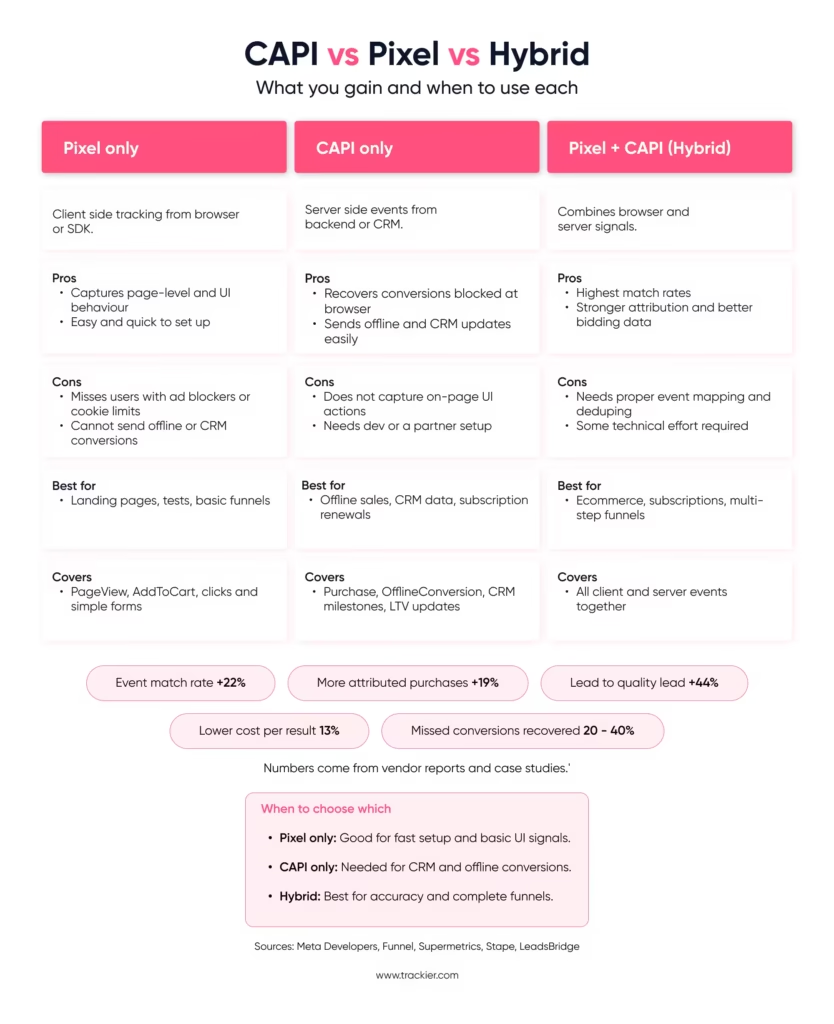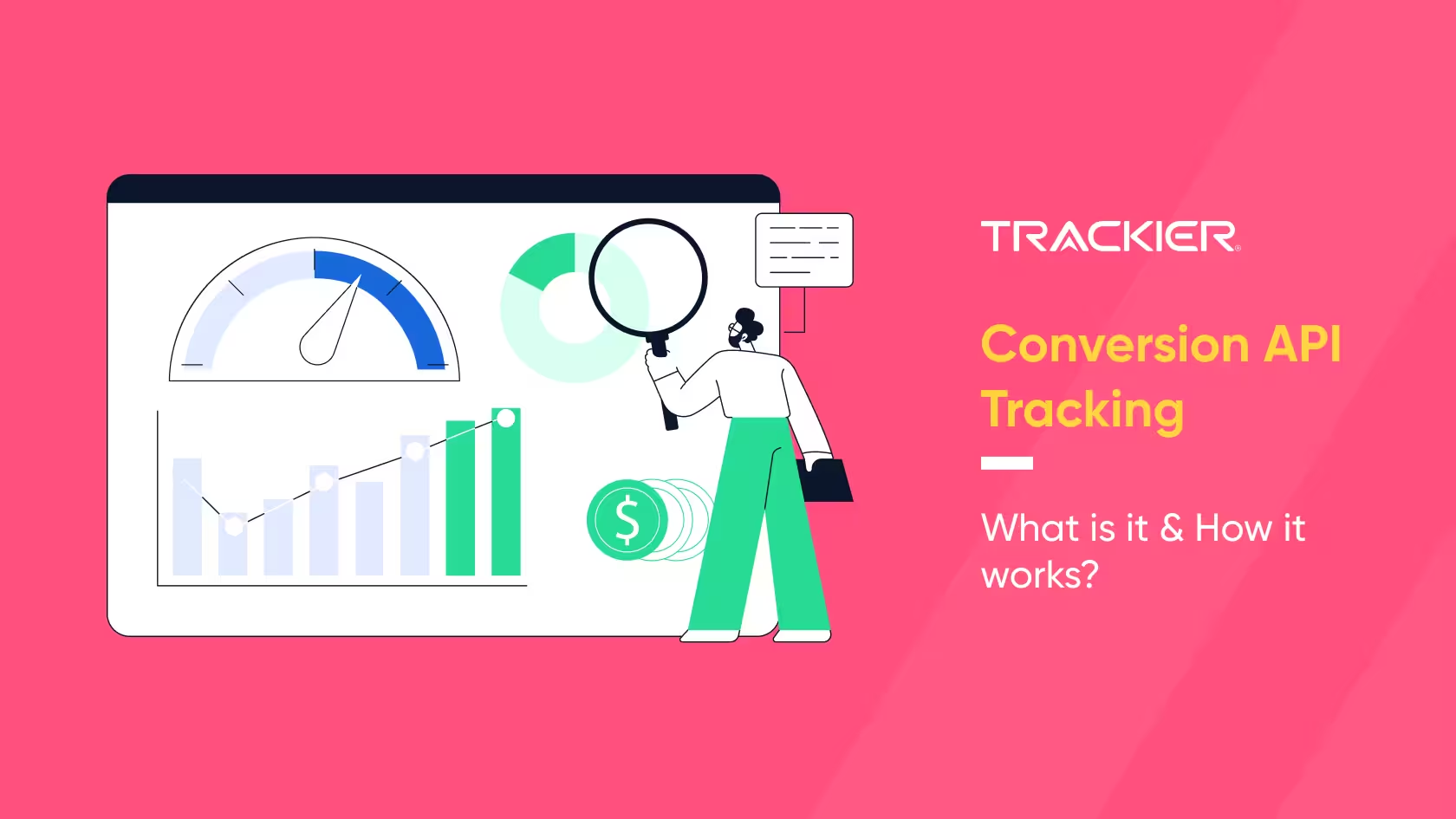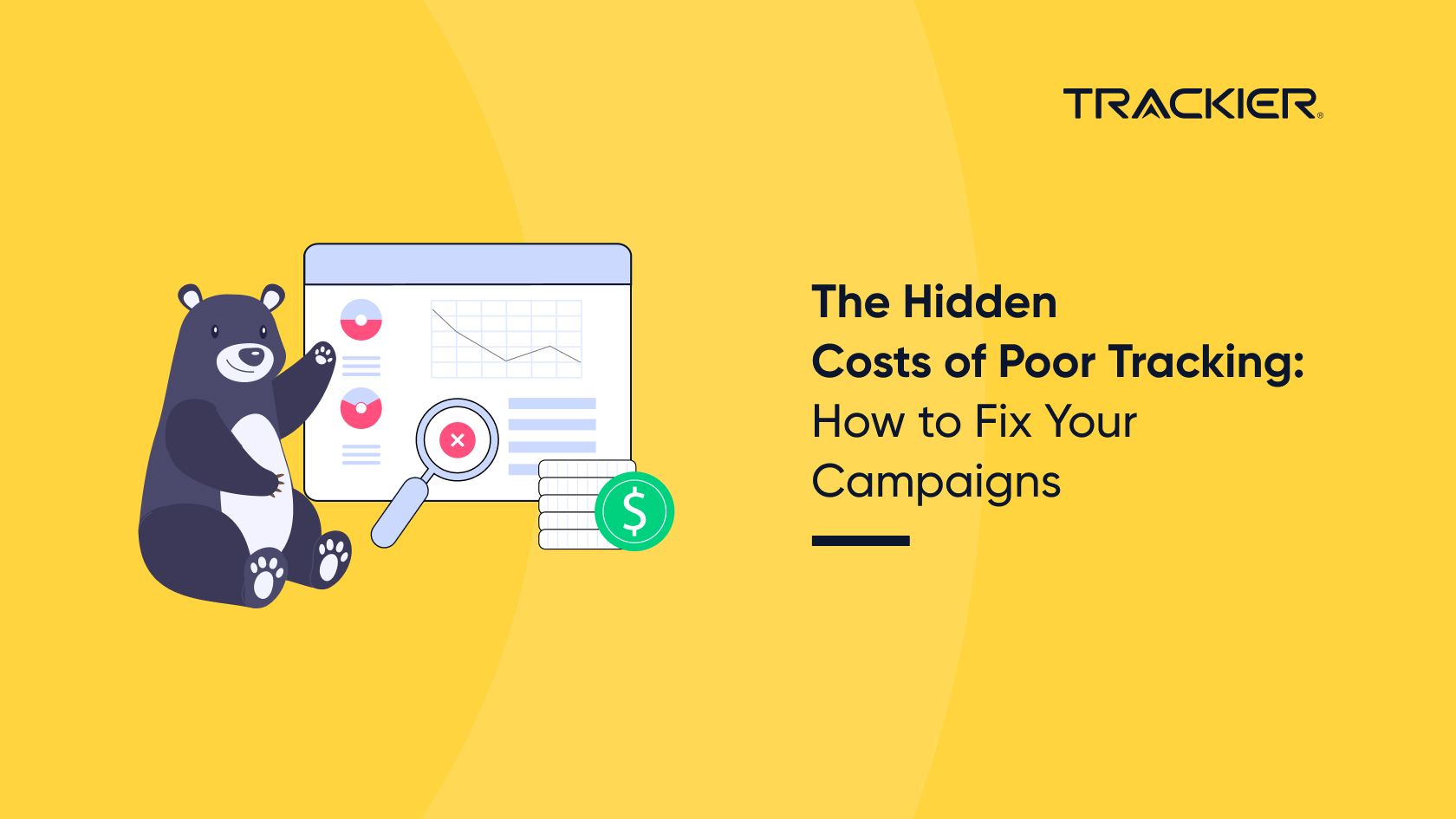You probably heard about conversion api if you run ads on Meta, or if tracking started feeling shaky after cookie changes.
Well, conversion api is the server-side way to send conversion events directly from your servers or CRM to Meta.
It helps recover events lost to ad blockers, browser restrictions, and app privacy rules, so your campaigns report more reliably and optimize better.
In this blog, we will walk you through what conversion api is, how it works, how to set it up, and the real gains marketers can expect.
What is a conversion API?
Quick Definition
A conversion API is a server-side endpoint that allows you to send conversion events, such as purchases, leads, form fills, or offline sales, directly from your backend (website server, CRM, or app) to an ad platform like Meta (Facebook/Instagram), rather than relying solely on browser-side scripts.
This gives you more reliable event tracking that’s less prone to cookie issues, ad-blockers, or browser restrictions.
Which events can you send with conversion api?
With conversion API, you can send a wide variety of events.
These include standard web events such as page views, leads, add-to-cart, purchases, registration completions. You can also send app events, offline conversions (like in-store sales or phone-order purchases), CRM events, and even messaging or chat-based conversions (from Messenger, WhatsApp, etc.).
On top of that, you can send enriched or custom event data, for example purchase value, currency, product ids, order IDs, subscription status, customer lifetime value, or custom lead-score attributes. That lets you capture deeper funnel events that standard pixel-based tracking might miss.
Why should marketers care about conversion API?
Tracking gaps created by cookie loss and privacy rules
Traditional browser-based tracking faces growing obstacles these days. Many users run ad-blockers or browsers block third-party cookies by default. According to a recent report, ad-blockers and “dark traffic” tools block a large portion of analytics scripts and third-party tags, meaning many visits and conversions do not get recorded.
That means if you rely only on a client-side pixel, you might be missing many valid conversions. For performance marketers, that is lost money and skewed data.
How conversion API uses first-party data to win back accuracy
Server-side tracking, that is, using conversion api, solves many of these gaps. With conversion API, your server sends conversion events directly to the ad platform. This bypasses browser restrictions, ad-blockers, and cookie deprecation cycles.
Because the data comes from your trusted backend or CRM, you can enrich it with first-party identifiers (email hash, phone hash), order value, currency, product ID, or offline info (like in-store purchases). This helps improve match quality and attribution.
Many businesses see server-side tracking as a future-ready foundation, particularly in a world where privacy laws (like GDPR / CCPA) and browser policies keep tightening.
Extra perks: site speed, data control, and compliance comfort
Switching tracking to server side can also improve user experience. Because you remove or reduce client-side tracking scripts, your pages can load faster. Fast-loading pages tend to have lower bounce rates and better conversion rates.
At the same time you gain greater control over what data you send out. Sensitive or unnecessary information can be filtered or anonymized before sending. That makes handling user consent and complying with privacy regulations easier.
This means if you serve users across geographies, like India, EU, US, a server-side setup helps you stay compliant globally while keeping strong tracking.
How does conversion API work?
Client Side v/s Server Side
Traditional tracking on the web (or in apps) normally uses something like a pixel or SDK that runs in the user’s browser or in their app. That means when a user visits a page or clicks a button, the browser or app sends an event to the ad platform, this is client-side tracking.
But with conversion api the flow changes.
Instead of depending on the user’s browser, your server (or backend: your web server, CRM, app backend, etc.) captures the event and sends it directly to the ad platform server. This is called server-side tracking or server-to-server data flow.
Because this route does not rely on cookies or JavaScript on the client end it works even when the user has blocked scripts, uses privacy-oriented browsers, or is on a device where tracking is restricted. That means events that would have been lost with pixel-only setups now get captured.
Event Deduplication and Identity Matching Explained
When you use both the client-side pixel and conversion api together (which is the recommended approach by Meta), the same event might get sent twice, once from the browser and once from your server. To avoid double-counting, you must send a unique event_id and match timestamps so Meta knows that the two signals refer to the same action.
Along with event_id, you can send hashed user identifiers such as email hash, phone hash, or other first-party identifiers. This helps Meta match the server-side event with a known user profile for better attribution.
When done right, conversion api acts as a fallback for missed pixel events (blocked by ad-blockers, cookie restrictions, etc.), while pixel continues to catch client-side data like UI behaviours, page context and metadata. This hybrid setup gives you the best of both worlds.
Here is a breakdown of the steps in which CAPI works:
Step 1. A user takes an action on your site or app
This could be anything from viewing a product page to signing up or making a purchase.
Your website records this behaviour the same way it always does.
Step 2. Your server captures that event
Your backend or CRM stores the details securely.
This is where you have full control. The data is cleaner and more complete because it does not get filtered by browsers or ad blockers.
Step 3. Your server sends the event to Meta using CAPI
Your server packages the event and sends it directly to Meta’s endpoint.
The request includes event name, user identifiers such as email or phone (hashed for privacy), and other important parameters like product value, currency and timestamp.
Step 4. Meta matches the event with a real user
Meta checks the incoming event and tries to match it with a user who viewed or interacted with your ad.
This is where match quality matters.
Research shows an average 22% increase in match rates when businesses add CAPI to their setup.
Step 5. Attribution, reporting and optimisation
Once matched, the event becomes part of your campaign performance.
This is how you unlock things like:
- More attributed purchases (19% lift reported by Meta)
- Higher quality lead identification (44% lift reported in official data)
- Better bidding and campaign delivery
- Cleaner reporting with fewer missing conversions
At this stage, the data helps Meta understand what worked and where to optimise your ads next.

What Types of CAPI Integrations Exist?
Partner Connectors and CDP Integrations
If your team prefers speed and minimal engineering work, a partner connector or a CDP is often the fastest route to add conversion api. These connectors map your events, hash identifiers, and forward them to Facebook conversions api without heavy custom code. They are ideal when you need CAPI integration quickly across multiple systems and clients. The trade-off is less control than a full custom server implementation.
Server SDK or Custom Server Implementation
A server SDK or a custom server script gives you the most control. Your backend triggers conversion api calls when purchases or lead events occur. You define the payload, the hashing, the event_id schema and the deduplication approach. This path works best for companies that want tight governance over data, have dev bandwidth, and need custom fields such as lifetime value or offline reconciliation.
Server Side Tag Manager Setups
Server side tag manager solutions let you steer browser events through a server container before sending them to the platform. This approach balances control and agility. You can use server containers to enrich or filter events, apply consent rules, and forward only the required fields to the Facebook conversions api. Many teams use server side tag managers to centralize event mapping across marketing tools.
Cloud Functions and Webhooks
For lightweight needs, you can implement conversion api with Cloud Functions or webhooks. For example, when an order completes, your e-commerce platform can trigger a webhook that hits a cloud function. The function prepares the event and posts it to the conversion api endpoint. This is a practical path for smaller teams or for vendors that offer webhook hooks out of the box.
Managed Services and Proxy Vendors
There are specialized vendors that run the server side endpoint for you. You push events to the vendor, they handle hashing, enrichment, retry logic, and post to Facebook conversions api. These services reduce engineering work and often come with templates for deduplication and testing. The cost is ongoing vendor fees and less direct control.
Which Integration Should You Pick for Your Team
Pick partner connectors when you need speed and multi system support. Choose a custom server sdk when you need full control and custom data. Use server side tag manager for a balanced solution that supports consent and governance. Use cloud functions for small, event driven needs. Use managed vendors when you prefer to outsource reliability and scaling.
Practical Checklist for Selecting an Integration Path
Use this checklist internally so you know which path fits your team:
- Decide how much engineering time you can commit
- List the event types you must send, including offline events if any
- Verify whether you need enriched fields like LTV or lead score
- Confirm data privacy and consent handling requirements for target geos
- Estimate ongoing maintenance and vendor costs
If you need help choosing an integration, Trackier’s blogs, E-Books and guides will help you out.
Take a demo for a handson experience for your team to pick the right path.
Next Steps
Here are the simple, practical next steps you can take, before the year ends:
- Audit your events and consent: List the events you currently track with pixel and find gaps you want to recover with conversion api.
- Pick a pilot campaign and an integration path: Start small with one high-value funnel, choose a partner or custom server depending on bandwidth.
- Implement deduplication and hashing: Send event_id and event_time, and hash identifiers consistently so the platform can match and dedupe.
- Run a controlled test: Compare pixel-only versus pixel plus conversion api on the same campaign to measure match rate and cost per result.
- Scale and govern: Once the pilot proves out, expand to more campaigns and set a simple governance plan for data quality and privacy.
Hungry for more? Download our free case studies that cover real stories.
Or sign up for the Trackier’s newsletter to get weekly best practices on referral programs and partner marketing.
FAQs
1. What is a conversion API?
A conversion API is a server-side method of sending conversion data directly from your backend to an ad platform. It helps you track actions like purchases, sign-ups or leads without depending only on browser cookies or scripts. This gives you more accurate, stable and reliable data.
2. What is the difference between Pixel and conversion API?
A pixel fires from the user’s browser. It depends on cookies, browser permissions and network conditions. A conversion API sends the same event from your server. It works even if the browser blocks the pixel or if cookies fail. Most marketers use both together because browser data plus server data creates the highest event accuracy.
3. How to create a conversion API?
You can create a conversion API in three ways.
– One, through a native plugin in platforms like Shopify or WooCommerce.
– Two, through server-side tag managers like Google Tag Manager, server-side or cloud-based tracking tools.
– Three, through a manual developer integration directly from your backend to the platform’s API endpoint.
The exact method depends on your tech stack and business size.
4. What are the benefits of using a conversion API?
The conversion API gives you cleaner event tracking during cookie restrictions, stronger match rates, more accurate attribution, better optimisation signals for the ad algorithm and support for offline or CRM based events. It also reduces data loss that usually happens because of ad blockers and browser limits.
5. What are some examples of CAPI usage?
You can use conversion API to send purchase events from your backend, send CRM events when a lead moves to the next stage, track subscription renewals, attribute phone call conversions or fire events that never pass through the browser. Many brands also use CAPI to track multi-device journeys or offline store orders.

